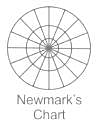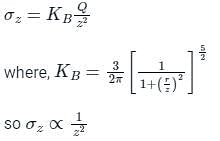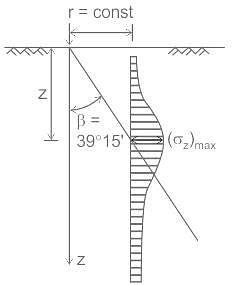Test: Vertical Stress Distribution - Civil Engineering (CE) MCQ
10 Questions MCQ Test Soil Mechanics - Test: Vertical Stress Distribution
In Newmark's influence chart for stress distribution, there are eight concentric circles and ten radial lines. The influence factor of the chart is
From the following statements, select the most appropriate statement:
Westergaard's analysis for stress computation within soil mass assumes.
Westergaard's analysis for stress computation within soil mass assumes.
| 1 Crore+ students have signed up on EduRev. Have you? Download the App |
Statement (A) : In Boussinesq's theory of stress computations, soil is considered to be un-stressed before application of the load.
Statement (B) : The contact pressure distribution under a rigid footing in cohesionless soil, is uniform throughout the width of the footing.
Statement (B) : The contact pressure distribution under a rigid footing in cohesionless soil, is uniform throughout the width of the footing.
Westergaard’s theory is applicable for which type of soil?
For a vertical concentrated load acting on the surface of a semi-infinite elastic mass, the vertical normal stress at a depth z is proportional to:
A concentrated load of 2000 kN is applied at the ground surface. What is the vertical stress at a point 6 m directly below the load ?
In the case of stratified soil layers, the best equation that can be adopted for computing the pressure distribution is
If the saturated density of a given soil is 2.1 t/m2, then the total stress (T in t/m2) and the effective stress (E in t/m2) of a saturated soil stratum at depth of 4 m will be
A point load exerts a maximum vertical stress at a radial distance of 1 m and at a depth of :
|
30 videos|76 docs|74 tests
|
|
30 videos|76 docs|74 tests
|




 is called Influence Factor.
is called Influence Factor.





























